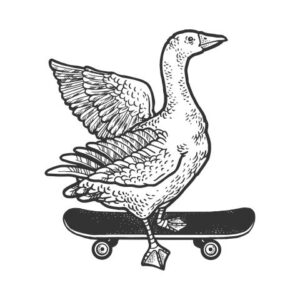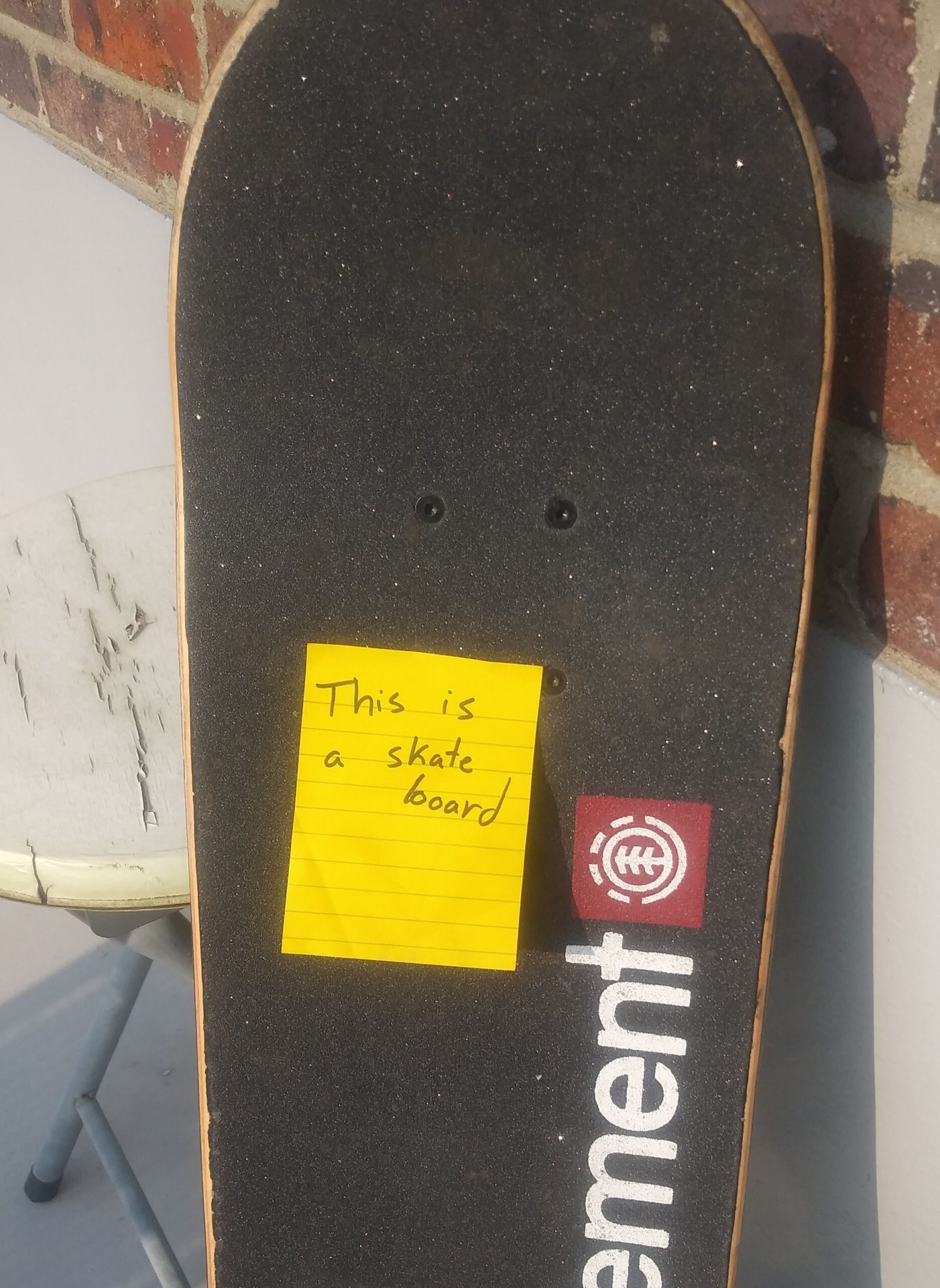Skateboarder terminology involves a lot of slang and some specific phrases that don’t mean much to non-skateboarders.
Try telling your non-skating friends that you “Tried to flip out of that tailslide on the hubba, but ended up landing primo” and watch them look confused.
So I tried to make a pretty comprehensive list here for all of the skateboarding terminology that I have picked up and know about. I have left out most tricks as this isn’t meant to be a trick list. I also don’t mention every obstacle you can skate as I already wrote a guide explaining skateboarding obstacles.
Anyway, let’s dive into it.
Alphabetized Skateboarding Terminology
Axles
The axle is the long pin that runs through the hanger and attaches to the wheels. For the best fit, the ends of your axle should line up (or come close to) the sides of your skateboard. You cannot physically see this component when your skateboard is set up.
Backside
Backside refers to rotating on your skateboard in a way that causes your back to face the direction of motion. Backside versions of tricks are often considered more difficult than the frontside versions. Backside can also refer to the direction that you approach a rail or a ledge.
Bailing
Bailing refers to kicking the skateboard away or otherwise abandoning a trick mid-attempt. You need to learn how to properly bail and fall when you learn to skate otherwise you can easily injure yourself. You can see my guide on falling safely here.
Bearings
Skate bearings are small circular devices that allow your wheels to spin and will determine how fast and smoothly they rotate. Bearings have an oil lubricant that can be washed away if you try to clean your bearings. If your bearings lose their lubricant, they can damage your trucks.
Bombing (Hill Bomb)
Bombing refers to riding your skateboard downhill at fast speeds often through city streets. Bombing is very popular in cities such as San Fransisco and is often cited as the most dangerous form of skateboarding. People die from hill bombing accidents every year.
Bushings
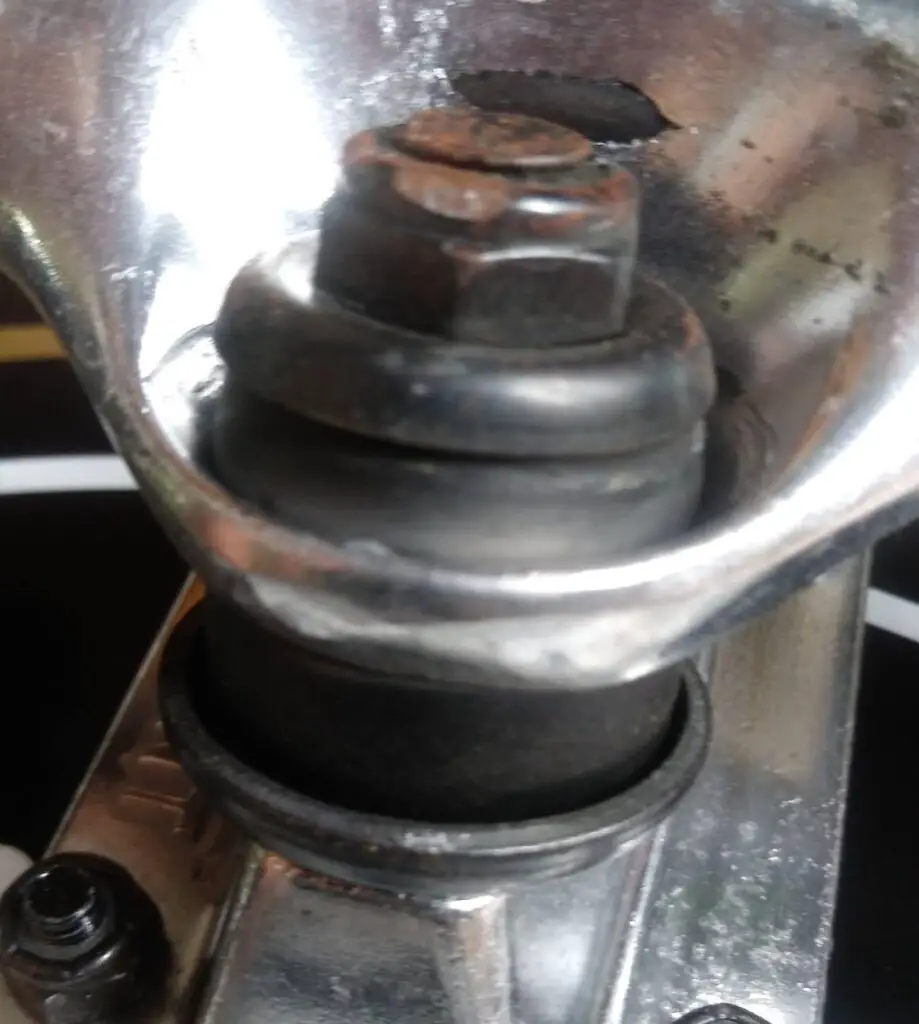
Bushings are the colorful, rubber-like cylinders located in the center of your skateboard’s trucks. Typically bushings are made out of urethane and most set-ups use two bushings per truck that are connected using a kingpin. The bushings allow you to turn and pivot your skateboard.
If you want to nerd out and learn more about skate hardware, then check out my complete and unneccesarily detailed guide to skateboard bushings.
Carving
Carving refers to making big, fast turns in the corners of transitions on your skateboard. Carving is most typically done in bowls and skateparks, but any street transition could work. Typically, looser trucks are better for carving with your skateboard.
Caveman
Caveman is a skateboarding trick done by jumping onto one’s board from a standing position. It can be down into a grind or other trick variations. This is considered a beginner-level trick but can be done by pros when a run-up to a spot is otherwise inaccessible.
Clean
Clean is skateboarding slang that refers to landing a trick with good form. If you want an example of a clean skater then watch Nyjah Hudson. His board control is amazing to watch and he lands almost all of his tricks clean. Landing tricks with bad form is called sketch.
Commit
Committing refers to wholeheartedly attempting a skateboarding trick with no intention to bail out. Oftentimes a skater is completely capable of grinding a rail or otherwise doing a trick, and simply needs to commit to the trick.
Complete
A complete refers to buying a skateboard that is already set up with hardware and griptape. Completes are ready to skate immediately and require no assembly for the skater. Completes are usually a bit cheaper than building your own custom skateboard as well.
Darkslide
Darkside refers to grinding along the top of the skateboard or the side of the skateboard with griptape. Darkslides were created by Rodney Mullen and are considered one of the most difficult grind tricks that you can learn. The griptape is extremely difficult to smoothly grind as it is made to be abrasive and grippy.
Deck (Board)
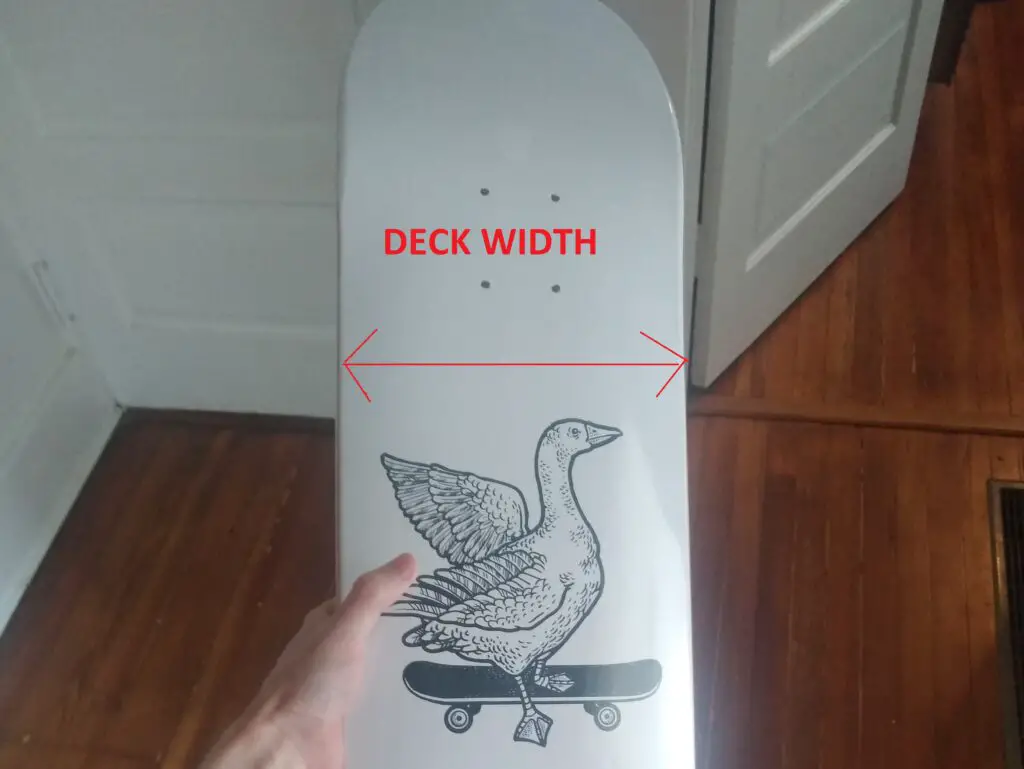
Your deck is the 7-ply wooden board part of your skateboard that typically comes with a graphic printed on the underside of the board. The deck will then have griptape attached to the top of the deck and then the trucks and other hardware attached to the bottom of the deck.
Dropping In
Dropping in refers to a skateboarder who starts skating by dropping into a halfpipe from the coping instead of starting from the bottom and pumping gradually for more speed. Dropping in is often incredibly nerve-wracking for beginner skaters to do but is rather simple to do.
Fakie
Fakie refers to doing a trick that is in the skater’s normal stance, but while riding backward. This differs from switch skating as switch skating actually involves changing your stance and switching the roles your feet play.Fakie is usually considered easier than doing a trick switch.
Freestyle Skateboarding
Freestyle skateboarding is a style of skateboarding that focuses on technical flat ground skateboarding. Classic freestyle tricks such as “spacewalks” and “walk the dog” are performed. Freestyle skateboarding was the dominant style of skateboarding in the 60s and early 70s.
Frontside
Frontside refers to rotating on your skateboard in a way that causes your front to face the direction of motion. Frontside versions of tricks are often considered easier than the backside versions. Frontside can also refer to the direction that you approach a rail or a ledge.
Gnarly
Gnarly is skateboarding slang that means something is cool or simply difficult to do. Usually difficult or impressive tricks are referred to as Gnarly. There are a couple of skateboard companies with Gnar in the name such as Proper Gnar which is a women’s skateboarding company.
Goofy
Goofy refers to the riding stance where your right foot is towards the nose of the board and your left foot is towards the tail and used to push off. Goofy skaters are less common than regular skaters and it is akin to being left-handed.
Grind
A grind refers to riding along a ledge or rail on the trucks of your skateboard rather than the board or wheels. There are many variations on different grinds such as Feeble Grinds and 5-0 Grinds. When you use the board to ride along a rail or ledge it is considered a slide, not a grind.
Grippy
Grippy is skateboarding slang that references how much grip a surface has. A rail that is very grippy is difficult to grind and so might need to be waxed to make it less grippy. Mob Grip griptape is considered the “grippiest” griptape you can buy.
Griptape
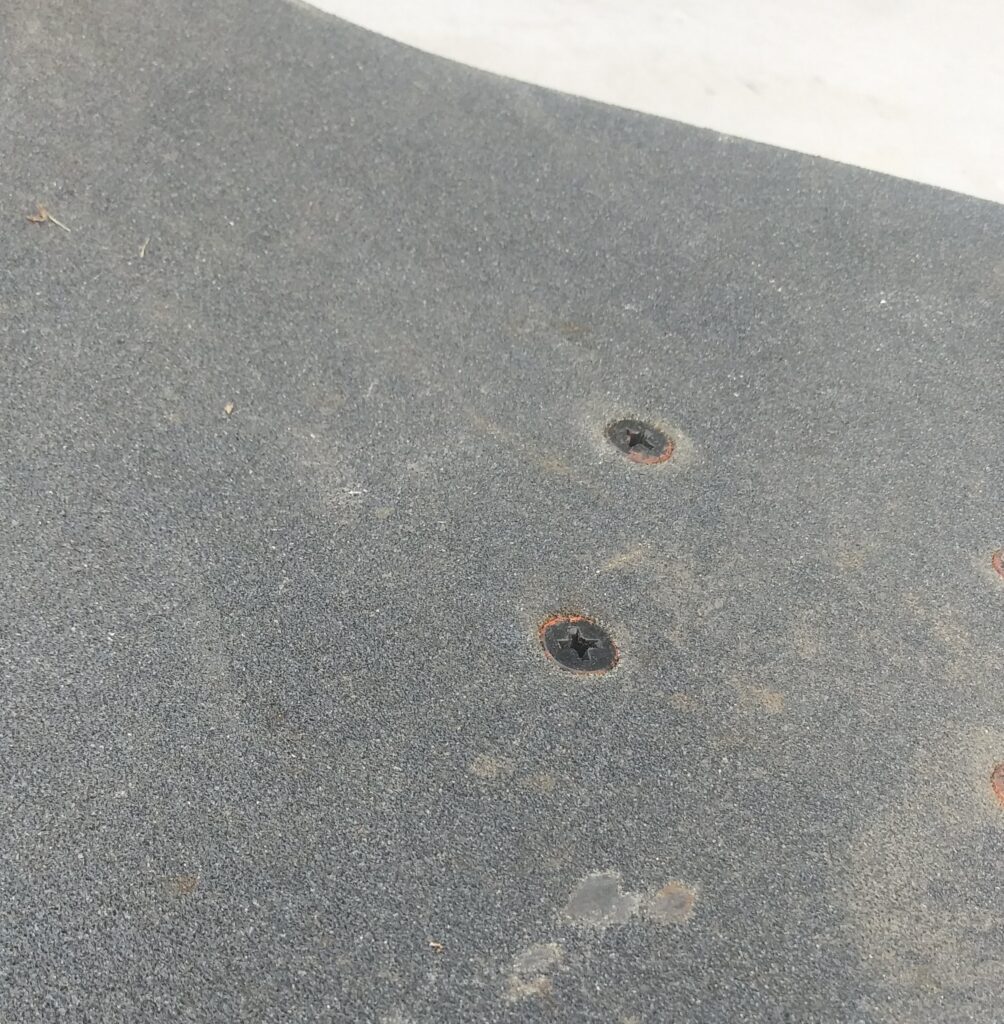
Griptape is the emery or sandpaper that is glued to the top side of a skateboard deck. Griptape creates a surface with a high friction force that allows the skater or rider to have better control of his or her board. All modern boards are ridden with griptape.
If you want to nerd out on griptape, check out my unnecessarily detailed complete guide to griptape here.
Hardware
Hardware refers to the components used to assemble a complete skateboard such as bearings, wheels, axles, and screws. Hardware doesn’t refer to the deck itself, but rather everything that is attached to the deck. You can buy backup hardware sets for cheap that are pretty useful.
Manual
A manual is a trick where the board is ridden on less than all four wheels. Typically, a manual will be ridden on two wheels on the nose or tail of the board. Sometimes you will have variations on the manual such as a Swedish Nose Manual.
Mongo
Mongo refers to pushing your skateboard with your front foot rather than your back foot. This is typically considered to be an improper way to push a skateboard and generally looks somewhat awkward. Pushing mongo also makes it more difficult to control the direction of your board.
Nose
The nose of your board refers to the front of your skateboard that is towards the direction of motion. Variations of tricks that are done with the tail end of the board can be down with the nose. These tricks will have names such as Nose Grind and Nose Manual.
Park Skating
Park skating refers to skating in skateparks that consist of concrete bowls and elements that are used for vertical skating. Typically park skating won’t incorporate street elements like handrails and stair sets. Park skating is a different category of skating in the Olympics and in most skate competitions.
If you want to learn more about the different types of skating (park, street, and freestyle), check out my complete guide here.
Primo
Primo means to balance with both feet on the thin edge of your skateboard typically with your feet using the wheels as extra support. Landing primo is typically a bad thing for most skaters as it is unintentional and leads to hard falls. Tricks that involve primo are usually freestyle skating tricks.
Regular
Goofy refers to the riding stance where your left foot is towards the nose of the board and your right foot is towards the tail and used to push off. Regular skaters are more common than goofy skaters and it is akin to being right-handed.
Sacked
Sacked refers to falling while riding a handrail and landing on the rail with your crotch. It can result in gnarly injuries and hospital visits in serious cases. No one wants to get sacked.
Send It
Sending it refers to fully committing to a trick particularly if a trick involves a gap or large air. Skaters will often say that someone just needs to commit or just needs to send it. Sometimes overconfidence isn’t the best idea and sending it goes wrong.
Sketch
Sketch refers to landing a trick in a way that doesn’t have good form. The skater might almost fall. The board might not be leveled out in the air. These are examples of what a sketch trick might be.
Slide
A slide refers to riding along a ledge or rail on your board rather than the trucks or wheels. There are many variations on different slides such as Tail Slides and Darkslides. When you use the trucks to ride along a rail or ledge it is considered a grind, not a slide.
Stall
A stall refers to stopping motion completely on the coping of a ramp or bowl. Stalls can also be performed on curbs, ledges, and other small obstacles. Stalls look pretty cool and it is easy to learn some of the basic stalls.
Street Skating
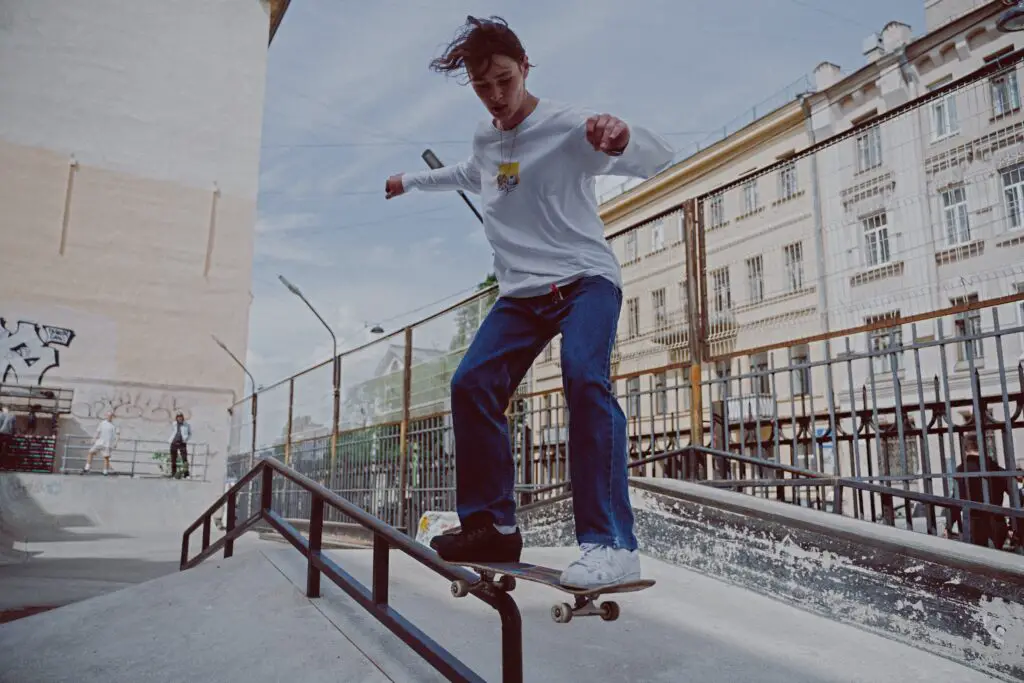
Street skating refers to skateboarding using urban elements such as stairs, handrails, and banks. Typically street skaters focus on flip tricks and grind/slide variations. Street skating started in the 90s and exploded in popularity in the early 2000s.
Switch
Switch refers to skateboarding in your non-normal stance. For instance, regular skaters would be skating goofy and goofy skaters would be skating regular. Doing tricks switch is considered a step up in difficulty compared to tricks done in a skater’s normal stance.
Tail
The tail of your board refers to the back of your skateboard that faces opposite the direction of motion. The tail is typically used to pop your board for Ollies and other tricks. On modern popsicle-shaped skateboards, the tail and nose are shaped exactly the same way.
Trucks
Skateboard trucks are the metal T-shaped pieces that mount onto the underside of the skateboard and keep your skateboard wheels and bearings securely attached to the deck. The are many components within the trucks themselves.
Wheel Bite
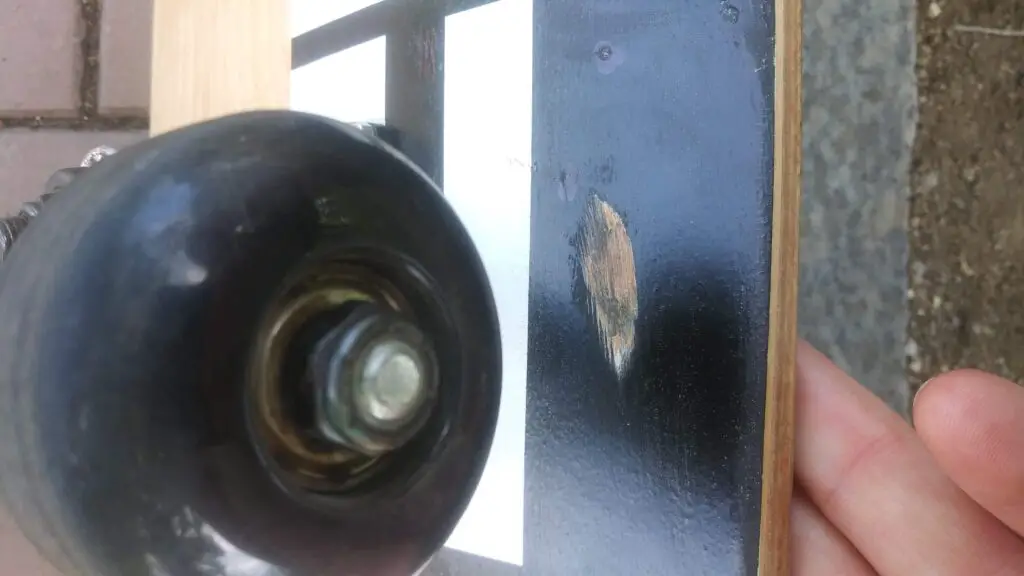
Wheel bite refers to your wheels touching your deck when you turn or carve while riding. This results in an abrupt stop and also marks and damages your deck. Wheel bite sucks and you need to be aware of it when you put bigger wheels on your skateboard.
If you want to learn how to put larger wheels on your board and still avoid wheel bite, check out my guide on putting longboard wheels on a skateboard.
Conclusion
So that’s it.
There are loads of terms and slang that I left out, but reach out to me if you want me to add something. I didn’t even try to cover trick names or obstacle names as I have other articles specifically for that. Any sources I used for the article are listed below.
Anyway, thanks for reading, and look out for more articles from Board and Wheels.
Sources
If I couldn’t word a definition well on my own, I opted to use better definitions written by others. Below are the sources for anyone else’s definition I used.
